(un)Welcome to the state park with no official name — or a way in
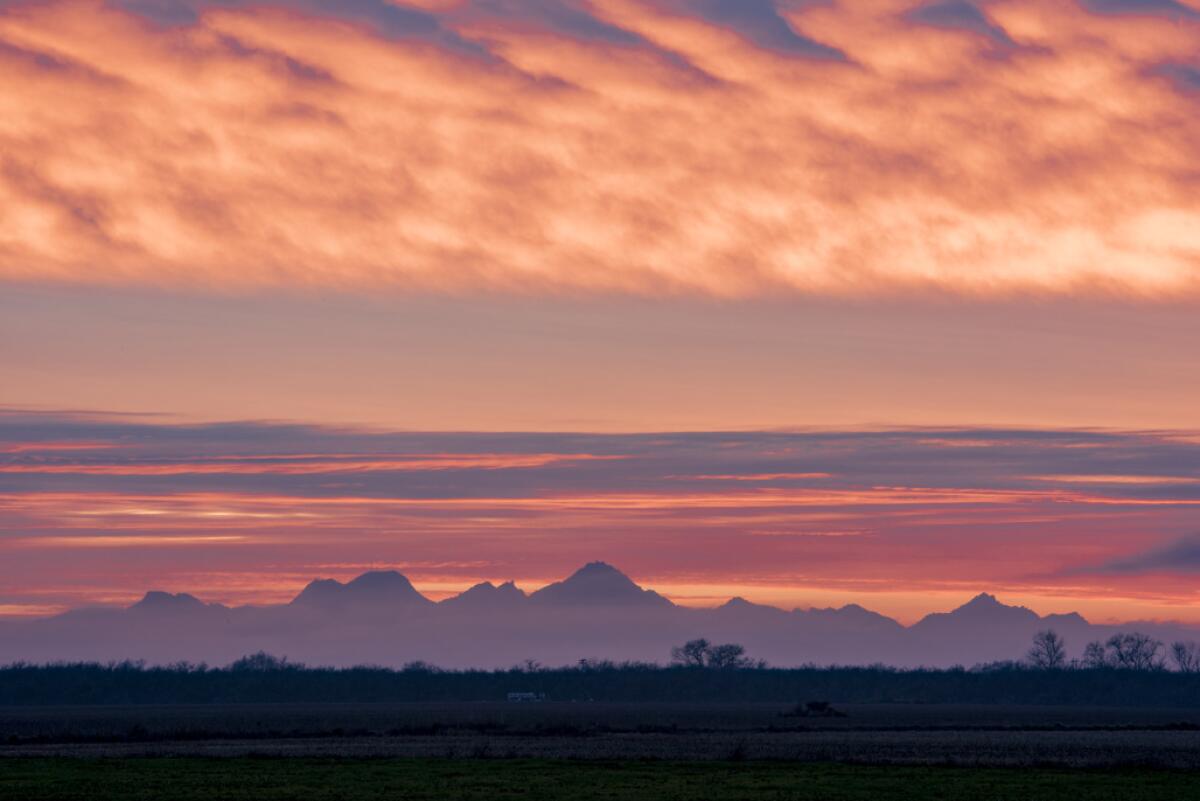
- Share via
Good morning. It’s Wednesday, May 22. Here’s what you need to know to start your day.
- The magical California state park that doesn’t allow visitors.
- Matthew Perry’s fatal ketamine usage is under criminal investigation.
- 22 essential artworks at the Getty and the surprising stories behind them.
- And here’s today’s e-newspaper
You're reading the Essential California newsletter
Our reporters guide you through our biggest news, features and recommendations every morning
You may occasionally receive promotional content from the Los Angeles Times.
The Sutter Buttes are home to a state park that almost no one is allowed to visit
The Golden State is rich in natural wonders, but there’s one place that virtually no Californians have been able to visit: the Sutter Buttes.
Sometimes called “the smallest mountain range in the world,” the formation in the Central Valley definitely sticks out in the region dominated by flat farmland. The Sutter Buttes are the remnants of a volcano that was active more than 1.4 million years ago. The resulting circle of lava domes contain pristine rolling hills covered in wildflowers and teaming with wildlife.
If you’ve never heard of the Sutter Buttes, it might be because the ancient and largely untouched land is mostly inaccessible — even though about 1,800 acres of it has been a state park since 2005.
As officials note near the top of the state park’s website:
“There is currently no public access point to enter this park. This park has not been officially named.”
The state land is entirely surrounded by private ranches and all roads leading to it are private. State officials purchased about 1,800 acres in 2003, believing that one of their neighbors might permit the public to use a road into the park, or else sell a slice adjacent to a public road. More than two decades later, neither of those things have happened.
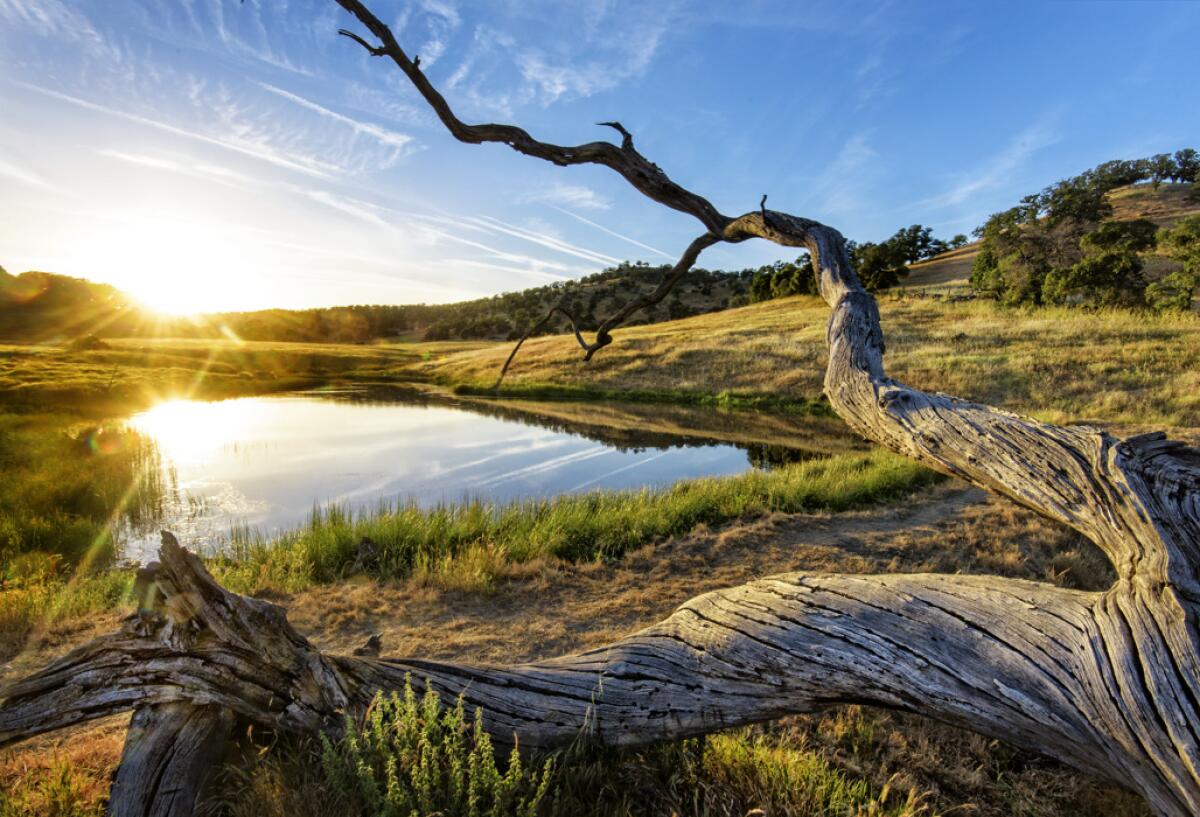
“Bitter debates over the lack of public access to the Sutter Buttes have roiled for years,” Times reporter Jessica Garrison wrote this week. “But most everyone on both sides agrees on this: They encompass some of the most magical and otherworldly terrain in California.”
Jessica unpacked the rich state history of the buttes in her recent story. They were a sacred refuge for the area’s indigenous population — the Maidu people — for thousands of years. In the 1840s, U.S. military officers and mass murderers Kit Carson and Gen. John C. Fremont hid out in the buttes and plotted to seize California from Mexico. They later participated in hostile actions against Mexico that culminated in the Mexican-American War, which set the stage for California to join the U.S. Park plans were initially floated by state officials in the 1920s, but fizzled out. The state tried again in the 1970s, but met staunch local resistance. Some landowners did begin allowing limited access to the public via guided tours during that time.
Decades later, persistent state officials finally purchased land on the north side of the buttes, including a region known as “Peace Valley,” and deemed it a park. But is a park really a park without parkgoers?
Some families have owned the land since before California was even a state. There’s a strong sentiment among many of the ranchers that the buttes’ tranquil splendor would be lost if the state started letting in the public.
“Many locals say the current status — an empty state park — suits them just fine,” Jessica wrote. “The Sutter Buttes are a precious ecosystem, they say, filled with delicate tribal artifacts and threatened species. It isn’t the same, they argue, as a state park in the immense Sierra Nevada or vast inland deserts or along the glittering coast.”
State parks officials were not available to discuss the saga with Jessica, but provided a statement that the department “continues to look for opportunities to either secure land or easements to provide access.”
There are still ways to see the Sutter Buttes IRL.
One local organization leads private hiking tours for small groups on private land bordering the park — but does not allow participants to enter the park itself. Reservations are scarce and the tours run from late October through early-May.
Today’s top stories
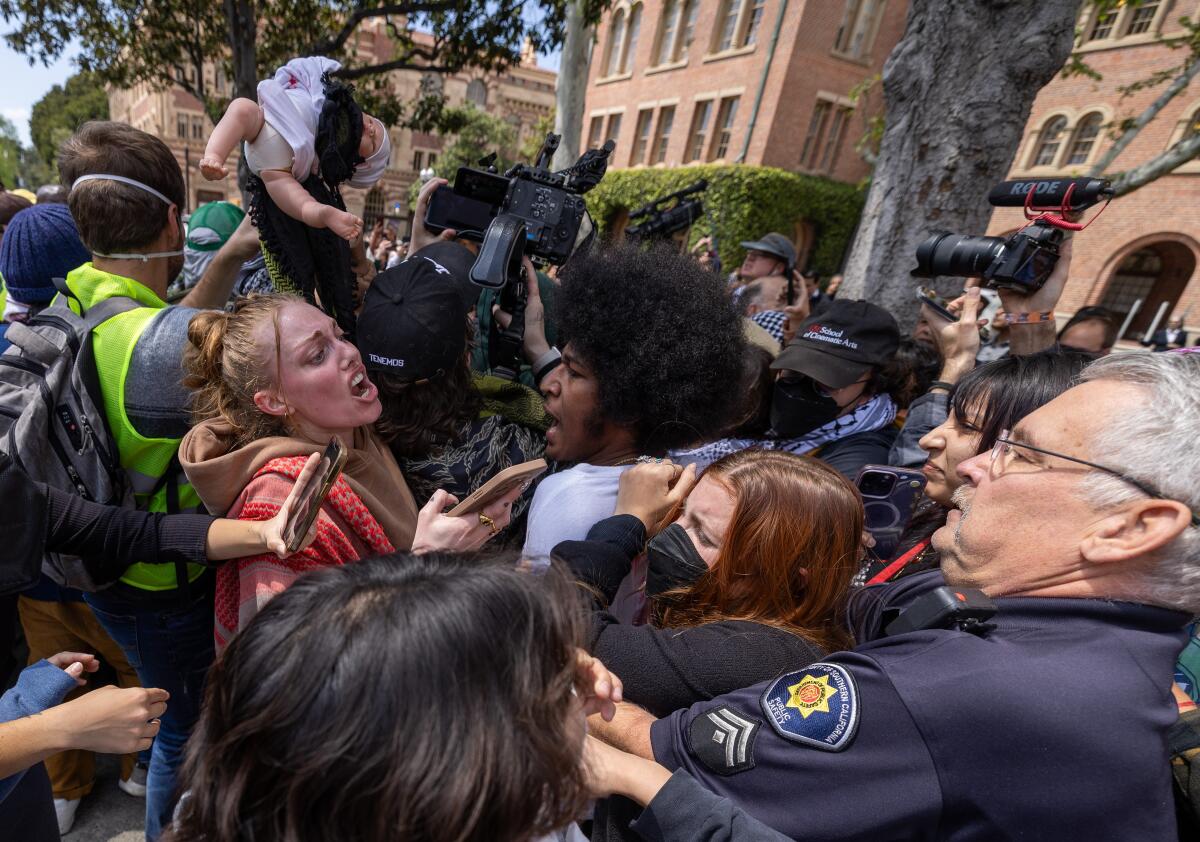
Campus protests
- Would pro-Palestinian demonstrators have disrupted a 2024 L.A. Olympics?
- ‘I got a job, I got class’: Why Cal State L.A. isn’t roiling with protest.
- Pro-Palestinian protesters move UC Santa Cruz encampment, join striking workers.
Matthew Perry’s death investigation
- Matthew Perry’s fatal ketamine usage is under criminal investigation by DEA and LAPD.
- Inside the investigation that will determine how Matthew Perry died.
- Matthew Perry died from acute effects of ketamine, officials rule.
Climate
- Memorial Day weekend in Southern California is looking gloomy. How long will this ‘May gray’ linger?
- California’s first Black land trust fights climate change, makes the outdoors more inclusive.
- Cloudy with a chance of rage: Climatologists fume over relocation of L.A. weather station.
Business
- California Assembly passes bill allowing Amsterdam-style cannabis cafes.
- Life after restaurants: Five former owners explain why they left ... some for good.
- Pixar layoffs are underway. About 175 jobs are being cut.
- Bruce Nordstrom, who helped grow the family-led department store chain, has died at 90.
- Red Lobster, an icon of casual American dining, files for bankruptcy.
Animals
- Turtle skulls and elephant toenails are among thousands of items seized at LAX mail facility.
- A Black bear had been killed by a car, but then its paws were cut off and stolen.
- After two L.A. Zoo elephants die in the span of one year, the City Council wants answers.
Sports
- Many familiar names on the roster as U.S. women’s soccer team readies for Olympics.
- Caitlin Clark marketing boom is celebrated but also draws questions of race and equity.
- Shohei Ohtani meets Cameron Brink. His wife, an ex-pro player, wants to meet Sparks rookie too.
More big stories
- UCLA Chancellor Gene Block heads to D.C. for grilling on campus antisemitism.
- Is Zionism patriotism or racism? Big disagreements over a word in use for 125 years.
- Sean ‘Diddy’ Combs faces sex assault lawsuit from a sixth person.
- Are ‘deaths of despair’ really more common for white Americans? A UCLA report says no.
- If you’re living with a drug or mental health problem, here’s where to look for help.
- Feds collected DNA from 1.5 million migrants in under four years, a report finds.
- ‘The Apprentice’ team fires back after Trump campaign threatens lawsuit.
- Many pushed to free ‘kind’ LAPD cop who murdered her ex-boyfriend’s wife. The victim’s family fought back.
- In a first, most California houses sell for over $900,000.
Get unlimited access to the Los Angeles Times. Subscribe here.
Commentary and opinions
- Jonah Goldberg: Trump and Biden agreed to debates. That’s a lot less important than it was made out to be.
- Editorial: Texas Gov. Greg Abbott’s pardon of a man who killed a protester undermines trust in the justice system.
- Anita Chabria: The brilliance of ‘Bleach blond bad built butch body.’
- Gustavo Arellano: California wants to mandate folic acid in tortillas to help babies. Why that’s bad.
- Robin Abcarian: This is what it took to expose Sean ‘Diddy’ Combs’ abuse of his girlfriend.
Today’s great reads
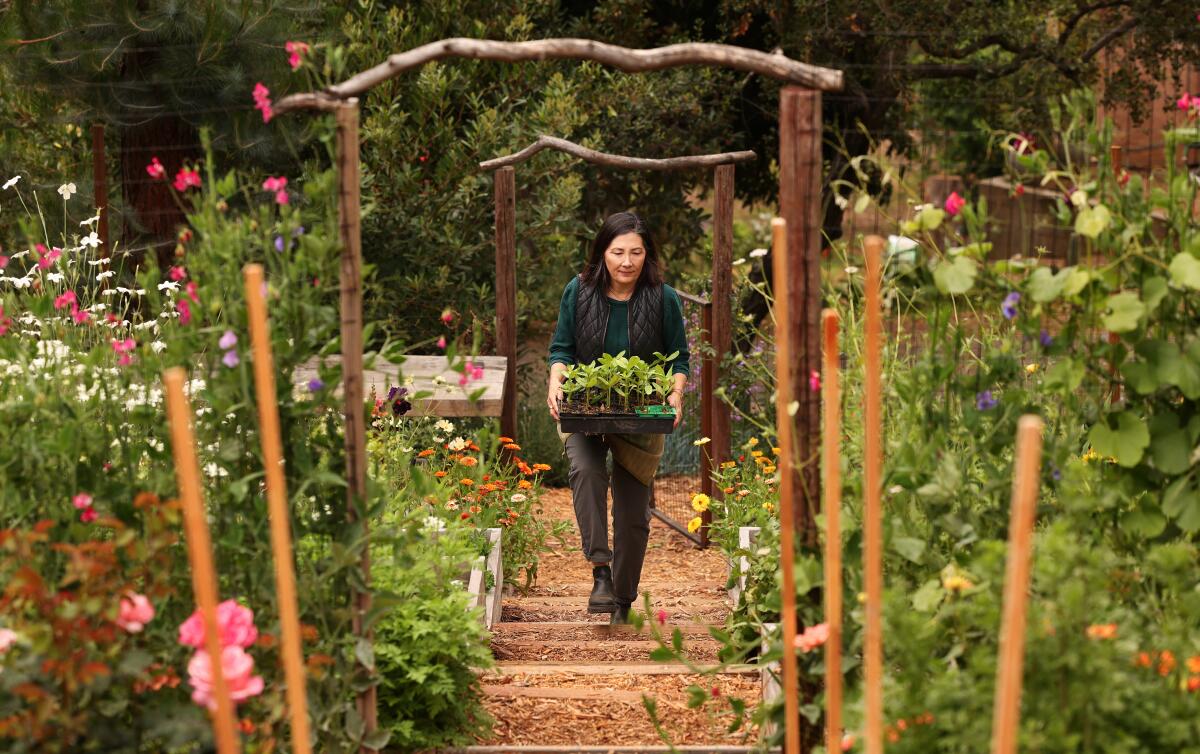
She turned an empty L.A. lot into a gorgeous mini flower farm as a ‘win-win.’ Inspired by the slow flower movement, landscape designer Kathleen Ferguson is “making people happy” by growing environmentally appropriate flowers at her micro-farm in L.A.
Other great reads
- Why some of California’s most outdoorsy people are moving to...Las Vegas?
- ‘Plays still matter to the health of Broadway’: Leslie Odom Jr. on ‘Purlie Victorious.’
- Your toilet seat doesn’t have to look boring. Bailey Hikawa’s designing ones with pizza slices and pearl necklaces.
- In hypnotically trashy Trump biopic and other showstoppers, Cannes goes under the knife.
How can we make this newsletter more useful? Send comments to essentialcalifornia@latimes.com.
For your downtime
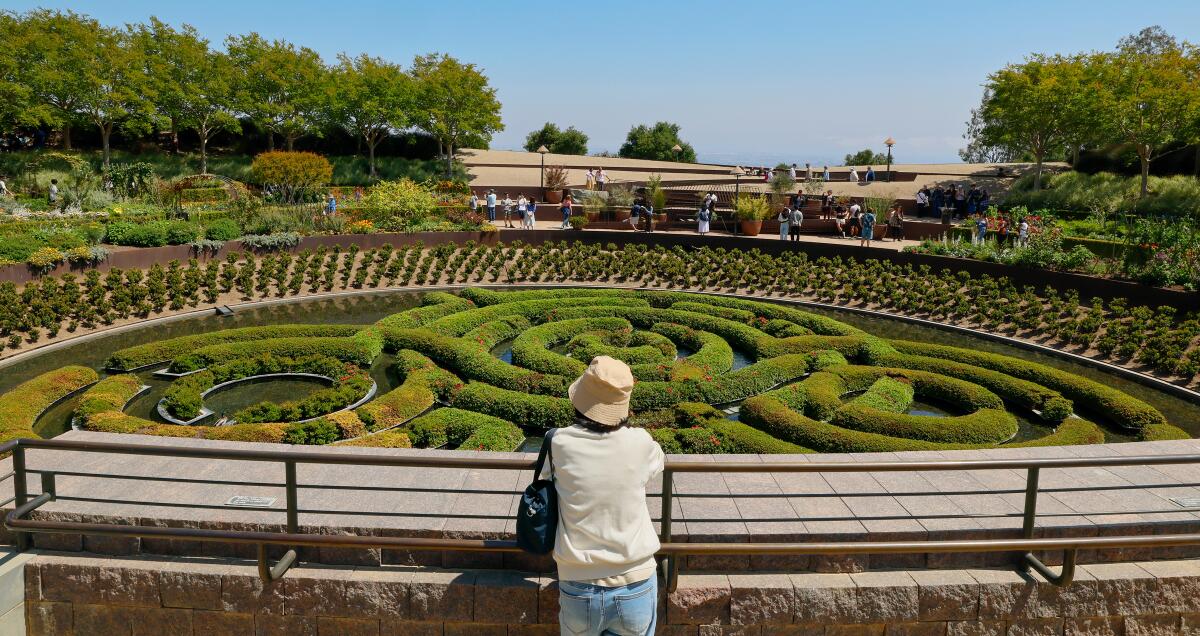
Going out
- 🖼️ 22 essential artworks at the Getty and the surprising stories behind them.
- 🌳 Eddie Rodolfo Aparicio’s sculpture will forever change how you see L.A.’s sidewalk ficus trees.
- 🎞️This year’s Los Angeles Latino International Film Festival to feature women-led movies, a film market.
Staying in
- 🧑🍳 Here’s a recipe for Bavel’s hummus masabacha.
- ✏️ Get our free daily crossword puzzle, sudoku, word search and arcade games.
And finally ... a great photo
Show us your favorite place in California! We’re running low on submissions. Send us photos that scream California and we may feature them in an edition of Essential California.
Today’s great photo is from Times contributor Jennelle Fong at the studio of artist and photographer Catherine Opie who is pictured sitting in her “big-bottom girl chair.”
Have a great day, from the Essential California team
Ryan Fonseca, reporter
Kevinisha Walker, multiplatform editor and Saturday reporter
Christian Orozco, assistant editor
Karim Doumar, head of newsletters
Check our top stories, topics and the latest articles on latimes.com.
Sign up for Essential California
The most important California stories and recommendations in your inbox every morning.
You may occasionally receive promotional content from the Los Angeles Times.








